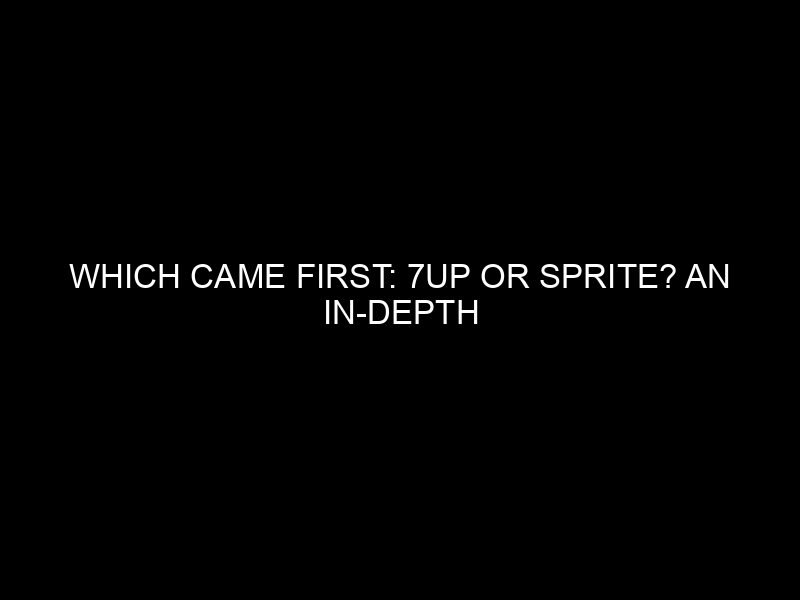As an individual with extensive experience in Nigeria’s business sector and a deep understanding of the beverage industry, particularly with 7 Up, I am excited to delve into a fascinating topic: the origins and historical journey of two iconic soft drinks, 7Up and Sprite. This question not only piques the curiosity of soda enthusiasts but also offers valuable insights into the evolution of the global beverage industry.
The Beginnings: A Tale of Two Sodas
The Birth of 7Up
7Up, originally named “Bib-Label Lithiated Lemon-Lime Soda,” was created by Charles Leiper Grigg in 1929. Grigg, who embarked on his venture in the soda industry in St. Louis, Missouri, introduced 7Up in the wake of the Wall Street Crash of 1929. It was a bold move, considering the economic climate of the time. The drink contained lithium citrate, a mood-stabilizing drug, until 1950 and was marketed as a tonic, offering health benefits—a common practice in the early days of the soft drink industry.
Sprite’s Emergence
Sprite, on the other hand, is a product of The Coca-Cola Company, introduced to the United States market in 1961 as a direct competitor to 7Up. It was developed under the codename “Project Sprite” and was formulated to capture the growing market of lemon-lime flavored sodas. Unlike 7Up, Sprite was caffeine-free from the start, which became one of its unique selling points.
Comparative Analysis: 7Up and Sprite
Market Strategy and Evolution
- 7Up: Initially marketed as a medicinal tonic, 7Up gradually shifted its image towards a refreshing soft drink. Over the years, 7Up has undergone various branding and formula changes, each reflecting the changing tastes and preferences of its consumers.
- Sprite: Sprite’s marketing strategy has always focused on a youthful and energetic image. This approach has helped the brand resonate with younger demographics, especially in urban and culturally diverse markets.
Ingredient Evolution and Health Impact
Both 7Up and Sprite have adapted to health trends over time, reducing sugar content and introducing diet and zero-calorie versions. This shift reflects a growing consumer awareness of health issues related to sugary drinks.
Impact on the Beverage Industry
The competition between 7Up and Sprite has fostered innovation and marketing strategies within the soft drink sector. Their rivalry has been beneficial for consumers, offering diverse choices and pushing each brand to improve its products continually.
FAQs
Q: Which came first, 7Up or Sprite?
A: 7Up was introduced in 1929, while Sprite was launched in 1961, making 7Up the older of the two brands.
Q: What were the original ingredients of 7Up?
A: The original 7Up contained lithium citrate, a mood-stabilizing drug, along with its lemon-lime flavor.
Q: Has Sprite always been caffeine-free?
A: Yes, one of Sprite’s unique selling points since its introduction has been its caffeine-free formula.
Q: How have these brands adapted to health trends?
A: Both brands have introduced diet and zero-calorie versions and have made efforts to reduce the sugar content in their products.
Q: What is the main difference in the marketing strategy of 7Up and Sprite?
A: 7Up initially marketed itself as a medicinal tonic, transitioning to a refreshing drink image, while Sprite has consistently targeted a youthful, energetic demographic.
In conclusion, the story of 7Up and Sprite is not just about which came first but also about how these brands have evolved and impacted the global beverage industry. Their history is a testament to the dynamic nature of consumer preferences and the importance of adaptability and innovation in business. As the industry continues to evolve, 7Up and Sprite will undoubtedly remain key players, adapting to future trends and consumer needs.

Leave a Reply